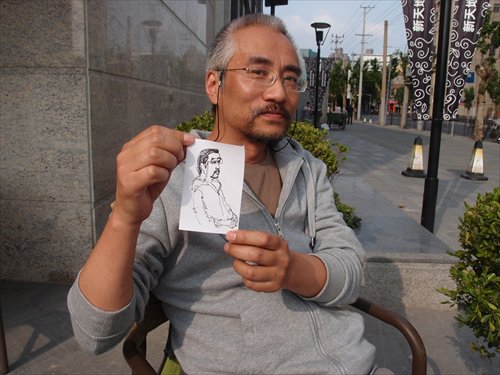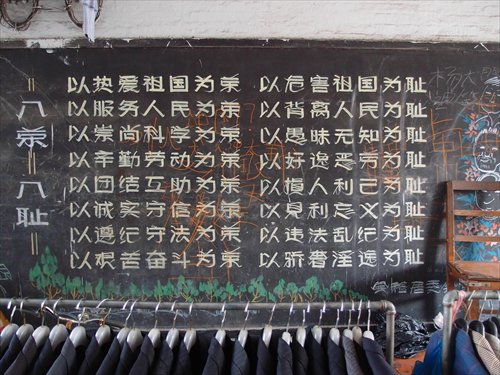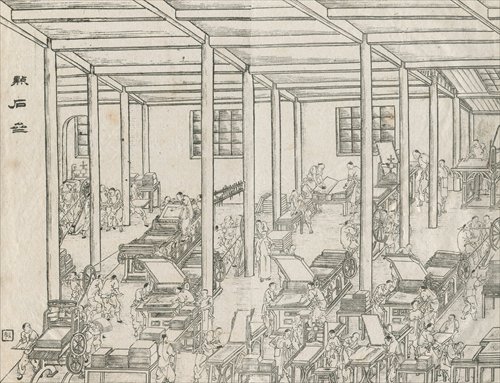Oh, adorable characters
Designer tracks Chinese typography through a century’s worth of material
There are roughly 80,000 Chinese characters in sum and about 3,500 of them are commonly used. The history of typefaces for Chinese characters can be dated back to the 7th century, when engraving typography was invented during the Sui Dynasty (581-618). According to the Shenzhen Special Economic Zone Daily, there were some 420 distinct Chinese font designs by 2011.

Chinese designer Jiang Qinggong has published a book recently to trace the history of Chinese typography. Photos: Courtesy of the designer
If you think that sounds low for one of the world's oldest forms of writing, you're not alone. Jiang Qinggong who has over 10 years of experiences in graphic design, notes that it's only about one-seventh of the number of font designs for Japanese writing, which shares many character forms with Chinese.
Jiang believes that font design plays a fundamental role in graphic design. Over the past five years, the Shanghai native has been studying the history of Chinese typography based on collected historical publications and interviews with experts in the field. He recently published a book named Shanghai Typography, which he hopes will provide more knowledge of Chinese typefaces and arouse designers' interest in Chinese characters.
"In the past five years or so, the font designs for Latin characters have received overwhelming attention with the success of several significant books, such as Akira Kobayashi's Latin Typeface: The Background and Use, and Lars Müller's Helvetica Forever. However, there are far fewer studies of Chinese characters," said Jiang.
The new book is Jiang's fourth in his Shanghai View series, which also consists of Shanghai Boutiques, Shanghai Shikumen, and Shanghai Outing. He started the series after closing his design studio in 2005.

History in typography
Incorporating more than 400 pictures - mostly copies of historical publications, along with some photos of handwritten, painted and Chinese characters - the book covers the development of Chinese typefaces from 1900 to 2014.
"Since the 1990s, the use of hand-written Chinese characters in graphic design has been on the wane, possibly because many Chinese designers have the mind-set that Latin words are more beautiful than Chinese characters," said Jiang, explaining why his materials from the 1990s and thereafter are mostly photographs of life scenes.
The early 20th century is illustrated by many prints from textbook pages, as that is when a series of new textbooks were published after the Qing Dynasty (1644-1911) abolished the ancient examination system keju in 1905.

The 1930s and 1940s witnessed the golden age of artistic Chinese characters in graphic design. This period is illustrated by a range of adverts, magazines, film posters, tickets and even invoices in Jiang's collection. For a long period starting in the 1950s, plain and bold styles prevailed. They were often seen in the ubiquitous banners exhorting social movements.
"Almost every Chinese reader will be touched by one of the pictures in the book, behind which are unforgettable Chinese memories," Jiang told the Global Times.
Born in 1960, Jiang worked on publications for a factory from the 1980s until 1994, before he resigned to open his own design studio. Many of his friends moved abroad in the 1980s, but Jiang feels lucky that he didn't leave and has become a witness to Chinese history.

Communication matters
Compared with running a design studio, writing books certainly hasn't brought Jiang much money - in fact, he spent most of what he had in publishing the books. Much of the publishing process was done by Jiang himself, including preparation, writing and design. He also purchased much of the source material - sometimes he had to spend several hundred yuan to buy a piece of paper bearing the characters he wanted.
As a freelancer lacking credentials, Jiang often had to visit interviewees repeatedly before they would agree to talk to him. For the new book, he interviewed 12 people, among them prestigious Shanghainese writer Jin Yucheng; typography educator Guo Baohong; type engraver Yao Zhiliang (who invented the Yao style typeface in 1958); and associate professor Chen Rong, who is now designing a new typeface. Each interviewee contributed thousands of words, of which Jiang selected about 800 from each for inclusion.

Moreover, due to the lack of study of typefaces in China, it was another great challenge for Jiang to verify materials and information. He mainly depended on republished local chronicles of the city to confirm content and dates.
"I would like to regard the book as one aimed at knowledge popularization, rather than one of profound academic significance," said Jiang.
His study of typeface is far from over, and he plans to deepen his research in future books.